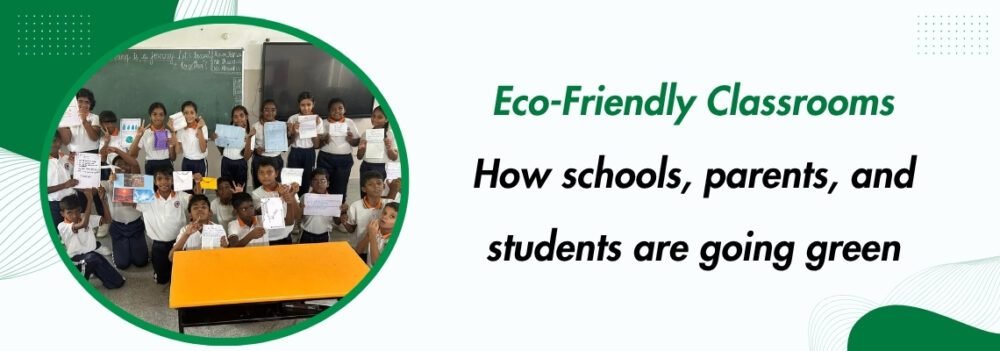Eco-friendly classrooms are changing the way students learn and live. When schools, parents, and students work together, they can create a greener, healthier learning space. In this blog, we will look at simple steps anyone can take, why it matters for young learners, and how small actions lead to big changes.
Why Green Classrooms Matter
Children spend a large part of their day at school. If classrooms use less energy, generate less waste, and bring nature indoors, students breathe cleaner air and focus better. Green classrooms also teach children the value of caring for the planet. When schools choose non-toxic paints, natural lighting, and recycled materials, they protect children’s health and set an example for eco-friendly living.
How Schools Can Lead the Way
Many schools are planting gardens to teach students about growing food. Garden beds, even small ones in pots, give lessons in biology, math, and responsibility. Schools can switch to LED lights, install motion sensors, and keep windows open when weather allows. Using refillable water stations and encouraging reusable bottles cuts down plastic waste. Some schools even compost cafeteria scraps, turning food leftovers into garden soil. Every change saves money and shows students how systems work to protect resources.
The Role of Parents at Home
Parents play a key part by reinforcing green habits outside school. Packing lunches in reusable containers and choosing eco-friendly snacks teaches respect for nature. At home, families can set up simple compost bins in the backyard or balcony. By involving kids in sorting recyclables, parents make waste reduction a family project. Discussing daily energy use—like turning off lights, closing the fridge door, or taking shorter showers—builds lasting awareness. When children see parents caring for the planet, they follow that example.
Students as Green Champions
Students have fresh ideas and real energy. A simple “green club” can start with a handful of classmates. They can write posters reminding peers to switch off lights or to bring reusable bottles. Older students might organize a swap meet for outgrown uniforms and books. Younger children can help water classroom plants or collect paper for recycling. When students lead, they learn organization, teamwork, and public speaking—skills they will use for life.
Building Green Habits Early
Young learners absorb habits quickly. When a teacher asks a student to water the plant each morning, the child learns responsibility. When students help sort trash at lunch, they learn what materials can be reused or recycled. Showing before-and-after photos of a school garden or a clean-up day makes the impact real. These lessons stick with children as they grow up.
Health and Academic Benefits
Green classrooms are often brighter, quieter, and more comfortable. Natural light can boost mood and attention. Plants reduce dust and increase humidity on dry days, cutting down on coughs and sniffles. When students feel well, they learn more and miss fewer days. Studies show that exposure to nature improves reading scores and concentration. Green design is not just about the planet—it supports healthy minds and bodies.
Community and Classroom Projects

Partnering with local groups can expand the impact. Invite gardeners or environmental experts to speak to students. Work with city recycling programs to set up paper drives. Encourage students to present green ideas at parent-teacher meetings. When a whole community supports green classrooms, projects have more resources and reach more people.
Long-Term Impact on Students
By taking part in green projects, students develop critical thinking. They learn to weigh costs and benefits, plan budgets, and solve problems. When a class raises funds for solar panels or rainwater catchment, students see how small steps add up over time. These experiences shape attitudes—today’s students become tomorrow’s green leaders in business, government, and homes.
Creating eco-friendly classrooms is a shared effort. Schools set the stage with green design and programs. Parents reinforce habits at home. Students bring energy and fresh ideas. Together, these efforts build healthier learning spaces, raise eco-aware citizens, and protect resources for the future. Green classrooms are more than a trend—they are a step toward a sustainable world where students learn by doing and caring for the planet.


